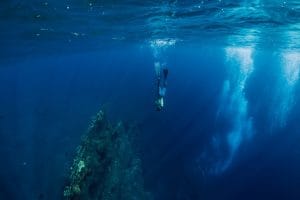
Why Scuba Divers Should Try Freediving: A Personal Perspective from an Scuba diving and Freediving Instructor
Hey everyone, I’m Matt, co-director of OceanSense Freediving here on the Sunny Coast. Over the
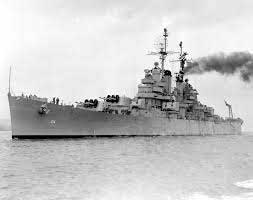
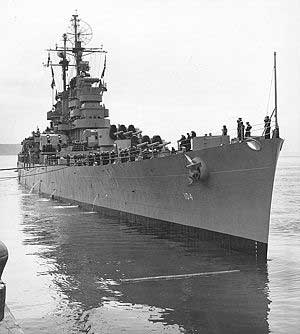 This is the deepest and most challenging wreck that is dived in the Solomons and is the only divable wreck sunk form the naval engagement know as “The Barroom Brawl”.
This is the deepest and most challenging wreck that is dived in the Solomons and is the only divable wreck sunk form the naval engagement know as “The Barroom Brawl”.
On the 12th November a Japanese surface force, made up of two battleships, one cruiser and six destroyers, was detected steaming south toward Guadalcanal to shell Henderson Field.
Admiral Callaghan’s support group (including the Atlanta) was to “cover retiring transports and cargo vessels against enemy attack.” They departed Lunga Point at about 1800 and steamed eastward through Sealark Channel, covering the withdrawal of the transports. An hour before midnight, Callaghan’s ships reversed course and headed westward.
USS Helena’s radar picked up the first contact with the Japanese Battle Group at a range of 26,000yd (24,000m). As the range closed, Atlanta’s surface search radar, followed by her gunnery radars, picked up a contact on the enemy ships.
Admiral Callaghan’s order for a course change caused problems immediately, as Atlanta had to turn left immediately to avoid a collision with one of the four destroyers in the van, the latter having apparently executed a “ships left” rather than “column left” movement. As Atlanta began moving to resume her station ahead of San Francisco, Akatsuki illuminated the Atlanta and fired torpedoes. Atlanta shifted her battery to fire at the enemy destroyer, opening fire at a range of about 1,600yd (1,500m).
As two other Japanese destroyers crossed her line, Atlanta engaged both with her forward 5in (130mm) mounts, while her after mounts continued to blast away at the illuminated ship. In addition, an unidentified assailant also opened up on the light cruiser from the northeast. At about that time, at least one of Akatsuki’s torpedoes plowed into Atlanta’s forward engine room from the port side. She lost all but auxiliary diesel power, suffered the interruption of her gunfire, and had to shift steering control to the steering engine room aft. Atlanta shot out Akatsuki’s searchlight, and the enemy ship, battered by San Francisco’s gunfire as well, sank with all hands.
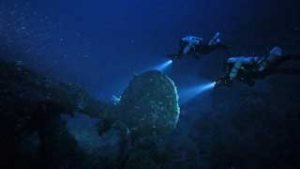 Soon after her duel with Akatsuki, Atlanta was hit by an estimated 19 8in (200mm) shells when San Francisco, “in the urgency of battle, darkness, and confused intermingling of friend or foe”, fired at her. Though almost all of the shells passed through the thin skin of the ship without detonating, scattering green dye, fragments from their impact killed many men, including Admiral Scott and members of his staff. Atlanta prepared to return fire on her new assailant, but San Francisco’s own gun flashes disclosed a distinctly “non-Japanese hull profile” that resulted in a suspension of those efforts.
Soon after her duel with Akatsuki, Atlanta was hit by an estimated 19 8in (200mm) shells when San Francisco, “in the urgency of battle, darkness, and confused intermingling of friend or foe”, fired at her. Though almost all of the shells passed through the thin skin of the ship without detonating, scattering green dye, fragments from their impact killed many men, including Admiral Scott and members of his staff. Atlanta prepared to return fire on her new assailant, but San Francisco’s own gun flashes disclosed a distinctly “non-Japanese hull profile” that resulted in a suspension of those efforts.
After the 8in (200mm) fire ceased, Atlanta’s Captain Jenkins took stock of the situation, and, having only a minor foot wound, made his way aft to Battle II. His ship was badly battered, largely powerless, down by the head and listing slightly to port, and a third of his crew was dead or missing. As the battle continued, the light cruiser’s men began clearing debris, jettisoning topside weight to correct the list, reducing the volume of sea water in the ship, and tending the many wounded.
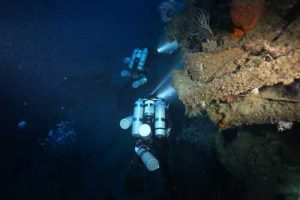 Daylight revealed the presence nearby of three burning American destroyers, the disabled Portland, and the abandoned hulk of Yudachi, which Portland summarily dispatched with three salvoes. Atlanta, drifting toward the enemy-held shore east of Cape Esperance, dropped her starboard anchor, and her captain sent a message to Portland explaining the light cruiser’s condition. Boats from Guadalcanal came out to take her most critically wounded. By mid-morning, all of those had been taken.
Daylight revealed the presence nearby of three burning American destroyers, the disabled Portland, and the abandoned hulk of Yudachi, which Portland summarily dispatched with three salvoes. Atlanta, drifting toward the enemy-held shore east of Cape Esperance, dropped her starboard anchor, and her captain sent a message to Portland explaining the light cruiser’s condition. Boats from Guadalcanal came out to take her most critically wounded. By mid-morning, all of those had been taken.
The Bobolink arrived at 0930 on 13 November, took Atlanta under tow, made harder by the cruiser’s still lowered anchor, and headed toward Lunga Point. Atlanta reached Kukum about 1400, at which point Captain Jenkins conferred with his remaining officers. As Jenkins, who was later awarded a Navy Cross for his heroism during the battle, later wrote, “It was by now apparent that efforts to save the ship were useless, and that the water was gaining steadily.” Even had sufficient salvage facilities been available, he allowed, the severe damage she had taken would have made it difficult to save the ship. Authorized by Commander, South Pacific Forces, to act at his own discretion regarding the destruction of the ship, Jenkins ordered that Atlanta be abandoned and sunk with a demolition charge.
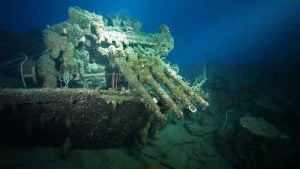 Accordingly, all remaining men except the captain and a demolition party boarded Higgins boats sent out from Guadalcanal for the purpose. After the charge had been set and exploded, the last men left the battered ship. Ultimately, at 2015 on 13 November 1942, Atlanta sank 3mi (5km) west of Lunga Point in about 400ft (120m) of water.
Accordingly, all remaining men except the captain and a demolition party boarded Higgins boats sent out from Guadalcanal for the purpose. After the charge had been set and exploded, the last men left the battered ship. Ultimately, at 2015 on 13 November 1942, Atlanta sank 3mi (5km) west of Lunga Point in about 400ft (120m) of water.

Hey everyone, I’m Matt, co-director of OceanSense Freediving here on the Sunny Coast. Over the
Join us Thursday 30th Jan at 5:30pm to hear David Mullins talk about nudibranch defences
Dear members, I would like to take this opportunity to inform you about a few